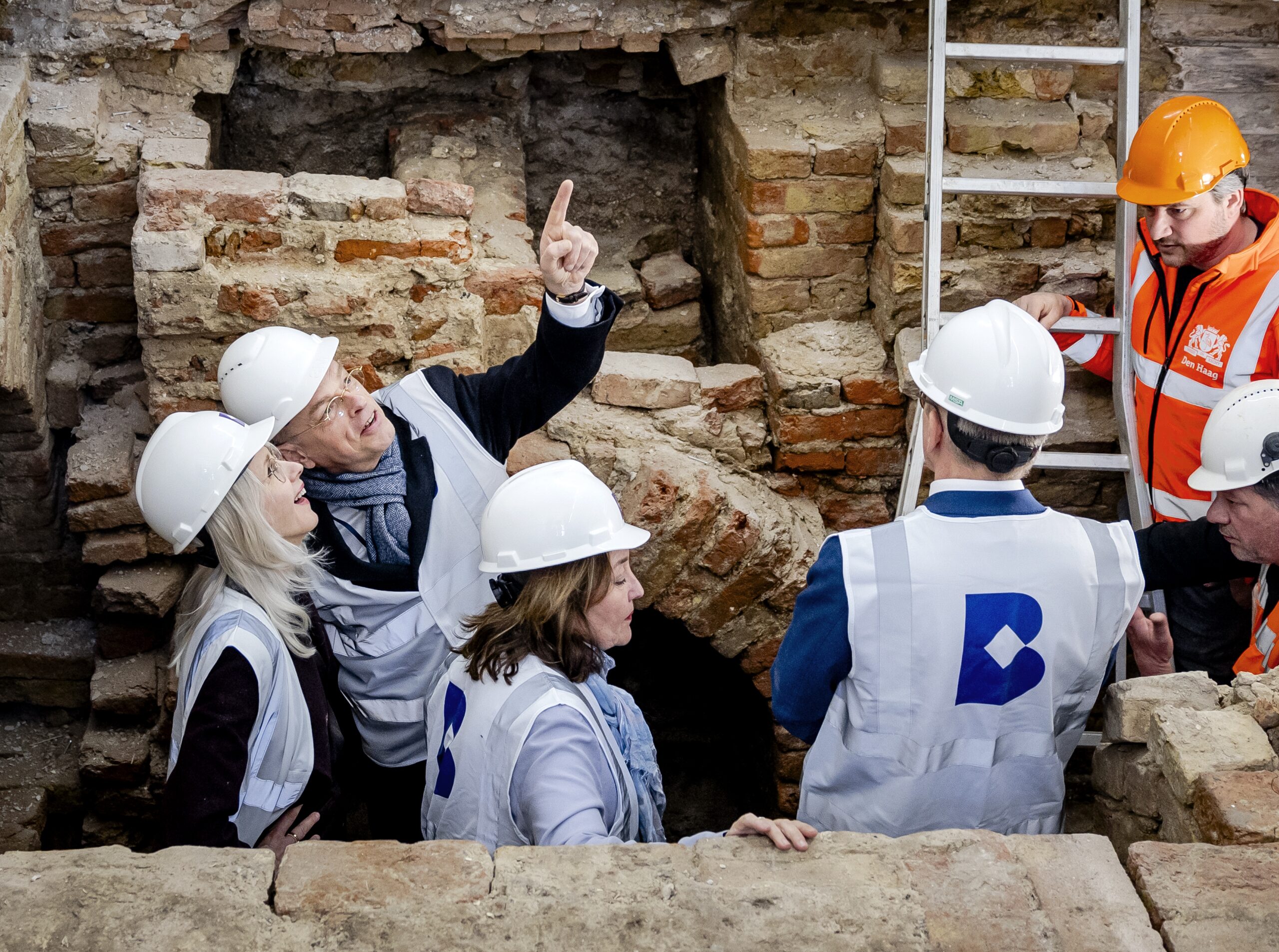Excavations suggest Binnenhof was power base in mid-13th century

Archaeologists working on the renovation of the Dutch parliamentary complex in The Hague have found evidence that it was the site of an extensive medieval ruler’s palace 30 years earlier than previously thought.
Historians already knew that the Binnenhof was extended in around 1280 by Count Floris V, but the new discoveries suggest that it had already been a “power centre of structure” in the time of his predecessor, Count Willem II.
The remnants date from the period when Willem constructed the Rolgebouw, or hall of the rolls, a medieval courtroom, shortly after his coronation as King of the Romans.
Willem II was crowned in Worringen, near Cologne, in 1247 at the age of 20. He died in 1256, aged 28, during a battle with the West Frisians, when he fell through the ice of a frozen lake near Alkmaar and was killed by enemy soldiers.
During excavation work as part of the renovation of the Binnenhof, archaeologists discovered the foundations of an earlier gate beneath the Stadhouder’s Gate, which connects the courtyard to the neighbouring Buitenhof.
Rewriting history
The foundations date from Willem’s time, indicating that the complex was already well developed two decades before Floris V built the Ridderzaal, or knights’ hall, the oldest working parliamentary building in the world.
“These excavations are rewriting the history of the Binnenhof,” said architectural historian Hein Hundertmark. “They tell us more about what the complex looked like in the Middle Ages.
“For example, we now know there were a lot more buildings in the initial stages than we previously thought.
“This means that the Binnenhof was not just the court of a count, but a court with royal architecture and even greater ambitions to serve as an imperial palace.”
Two years ago a 13th-century quay wall was found beneath the floor of the plenary council chamber of the Council of State. The wall held back the water of the canal that ran along the Binnenhof, which was filled in in the 19th century.
Archaeologists have also found traces of a narrow annex and a wall that would have surrounded the medieval courtyard.
“Exceptional” discovery
“It’s exceptional to find such a large part of the foundation from the Binnenhof’s earliest period,” said Peter Stokkel, the head of The Hague’s municipal archaeology team. “This discovery helps us get a better sense of how the Binnenhof developed as a count’s residence in the 13th century.”
Another discovery was a cellar used to dump refuse, which gave an insight into the lifestyles of wealthy people at the time. One of the objects found in it was the skull of a heron, which was regarded as a delicacy by the nobility.
There was also a stoneware flagon, or stone jug, which researchers believe may have been left on the site as a “construction sacrifice” because it was intact. A silver coin bearing the likeness of Floris V was unearthed, apparently dating from the last phase of his rule from 1293 to 1296.
Thank you for donating to DutchNews.nl.
We could not provide the Dutch News service, and keep it free of charge, without the generous support of our readers. Your donations allow us to report on issues you tell us matter, and provide you with a summary of the most important Dutch news each day.
Make a donation